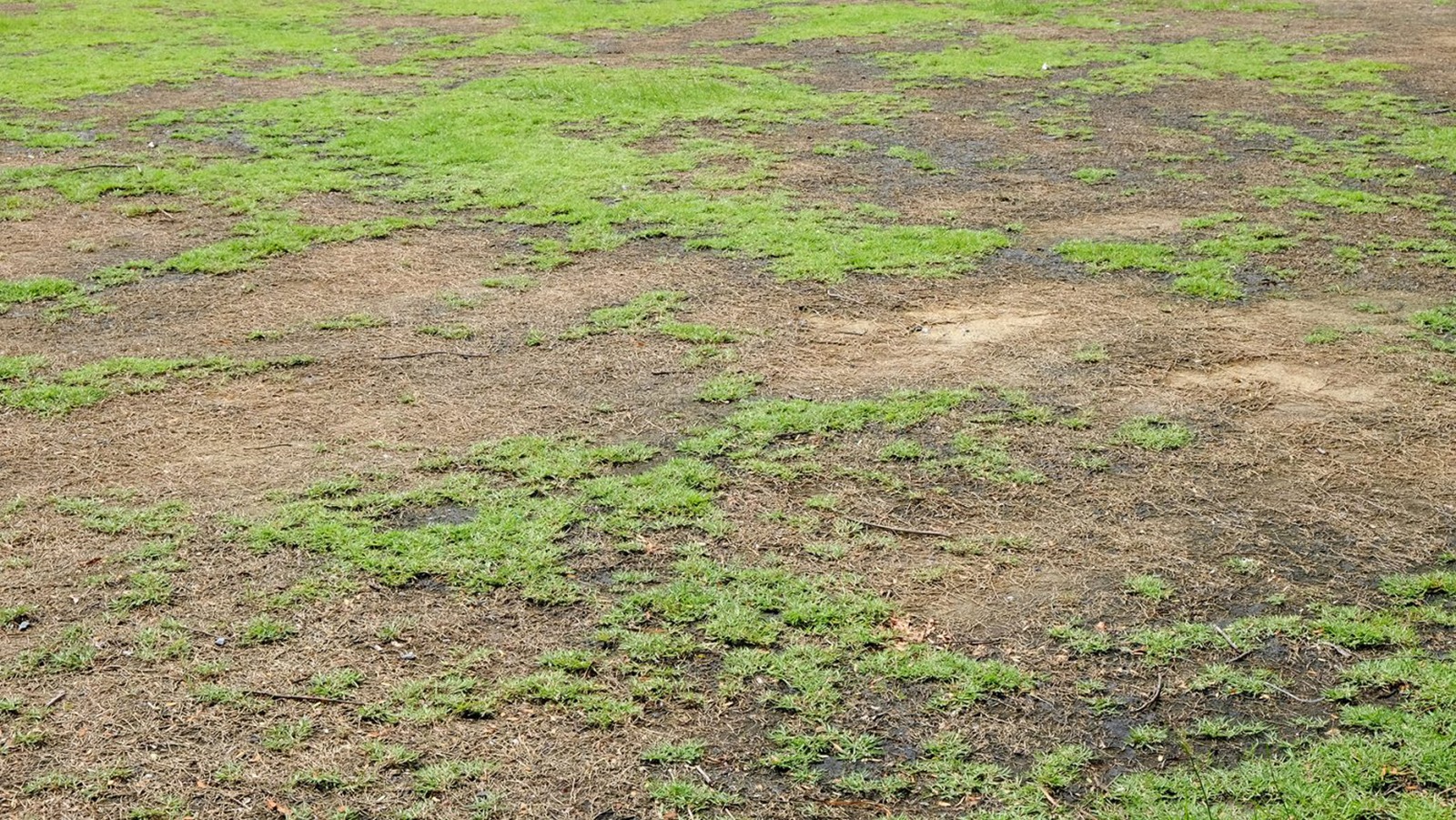Importance of a Healthy and Lush Bermuda Grass Lawn
Having a healthy and lush Bermuda grass lawn not only enhances the overall aesthetic appeal of your property but also provides numerous practical benefits. Bermuda grass is known for its resilience, drought tolerance, and ability to withstand heavy foot traffic, making it an excellent choice for lawns in warm climates. However, getting Bermuda grass to spread and establish a thick carpet-like coverage requires proper care and maintenance.
A well-spreading Bermuda grass lawn offers several advantages. Firstly, it acts as a natural weed suppressor, minimizing the growth of unwanted plants and reducing the need for herbicides. Additionally, the dense grass coverage helps prevent soil erosion and promotes water conservation by reducing runoff. A thriving Bermuda grass lawn also contributes to a cooler microclimate, making outdoor activities more enjoyable during hot summer months.
In this comprehensive guide, we will explore various techniques and strategies to help you achieve optimal spreading of Bermuda grass in your lawn. We will delve into the factors affecting Bermuda grass growth, discuss essential preparations, and provide practical tips for promoting its spreading. From soil preparation to proper watering and fertilization techniques, as well as addressing common challenges and troubleshooting, this article aims to equip you with the knowledge and tools needed to create a vibrant and expansive Bermuda grass lawn.
Now, let’s begin by understanding the characteristics of Bermuda grass and the common challenges that can hinder its spreading.
Characteristics and Benefits of Bermuda Grass
Bermuda grass, scientifically known as Cynodon dactylon, is a warm-season grass variety widely recognized for its ability to withstand heat, drought, and heavy use. Some key characteristics of Bermuda grass include:
Fast growth
Bermuda grass is known for its rapid growth rate, allowing it to quickly establish and spread across the lawn.
Aggressive Spreading Habit
This grass variety possesses an aggressive rhizome and stolon system, enabling it to send out above-ground stems (stolons) and below-ground runners (rhizomes) that aid in lateral spreading.
Excellent Drought Tolerance
Bermuda grass has a deep root system that helps it withstand prolonged dry spells, making it well-suited for arid and semi-arid regions.
High Wear Tolerance
Its ability to bounce back from heavy foot traffic makes Bermuda grass popular for lawns, sports fields, and high-traffic areas.
Common Challenges and Reasons for Poor Spreading
While Bermuda grass is known for its vigorous growth and spreading habit, several factors can impede its ability to establish a thick and uniform coverage. Some common challenges include:
Shade intolerance
Bermuda grass thrives in full sun and struggles in shaded areas. Lack of sunlight can hinder its spreading and result in thin or patchy areas.
Soil Compaction
Compacted soil restricts root growth and impedes the spread of Bermuda grass runners and stolons.
Poor Soil Fertility
Inadequate nutrient levels in the soil can hamper Bermuda grass growth and limit its spreading potential.
Improper Mowing Practices
Mowing too low or infrequently can weaken Bermuda grass, making it susceptible to spreading issues.
Invasive Weeds
Competing weeds can crowd out Bermuda grass and impede its spreading by depriving it of essential resources.
By understanding these characteristics and challenges, you’ll be better equipped to address the specific needs of Bermuda grass and implement effective spreading strategies. In the following sections, we will delve into the necessary steps and techniques to prepare your lawn for optimal Bermuda grass spreading.
Preparing Your Lawn for Optimal Spreading
Soil Preparation Techniques for Bermuda Grass
Before focusing on Bermuda grass spreading, it’s crucial to ensure that the soil provides an ideal environment for growth and expansion. Follow these soil preparation techniques:
Conduct a soil test to assess the pH level, nutrient content, and soil composition. This information will help you determine if any amendments are necessary. Bermuda grass thrives in slightly acidic to neutral soil with a pH range of 6.0 to 7.0.
Based on the soil test results, add necessary amendments to optimize the soil for Bermuda grass spreading. Common soil amendments include lime to raise pH levels if acidic, sulfur to lower pH if alkaline, and organic matter such as compost to improve soil structure and fertility.
Proper Mowing Practices
Mowing practices play a crucial role in encouraging Bermuda grass spreading. Follow these guidelines for proper mowing:
Maintain Bermuda grass at an optimal height of 1 to 1.5 inches. Mowing at this height encourages lateral spreading and helps the grass develop a dense turf.
Mow your Bermuda grass regularly, particularly during its active growth period. For warm-season grasses like Bermuda grass, mow every 5 to 7 days during the peak growing season. Avoid cutting more than one-third of the grass blade length in a single mowing session to prevent stress on the grass.
Regular mowing at the appropriate height promotes healthy root development, stimulates lateral spreading, and discourages weed growth. By following these mowing practices, you’ll create an environment conducive to Bermuda grass spreading.
Promoting Bermuda Grass Growth
To encourage Bermuda grass spreading and achieve a lush lawn, it’s essential to focus on promoting healthy growth. Two critical factors in this process are proper watering and effective fertilization techniques:
Watering Guidelines
Proper watering is crucial for Bermuda grass growth and spreading. Follow these watering guidelines:
Water your Bermuda grass deeply but infrequently to encourage deep root growth. Provide approximately 1 inch of water per week, either through rainfall or irrigation. Water deeply every 3 to 4 days during active growth periods.
Use a sprinkler system or irrigation method that delivers water evenly and adequately covers the entire lawn. Avoid overwatering, as it can lead to shallow root development and increase the risk of disease.
Fertilization Strategies
Bermuda grass requires proper nutrition to support its growth and spreading. Consider the following fertilization strategies:
Nitrogen (N), phosphorus (P), and potassium (K) are essential nutrients for Bermuda grass. Apply a balanced fertilizer with a ratio like 3:1:2 or 4:1:2 (N:P:K) during the active growth season. Slow-release fertilizers are recommended to provide consistent nutrient supply.
Apply fertilizer in early spring when the grass starts actively growing. Follow up with additional applications every 6 to 8 weeks during the growing season. Use a broadcast spreader for even distribution, and water the lawn lightly after application to help the fertilizer penetrate the soil.
Proper watering and fertilization practices provide Bermuda grass with the necessary resources for vigorous growth, spreading, and overall health. By following these guidelines, you’ll create optimal conditions to encourage the expansion of your Bermuda grass lawn.
Encouraging Spreading through Overseeding
Overseeding is a technique that involves spreading additional Bermuda grass seeds over an existing lawn to enhance coverage and fill in thin or bare areas. It helps promote Bermuda grass spreading and rejuvenates the lawn. Here’s what you need to know about overseeding:
- Identify Thin or Bare Areas: Inspect your lawn and identify areas with sparse Bermuda grass coverage or bare spots that need improvement.
- Select the Right Bermuda Grass Variety for Overseeding: Choose a Bermuda grass variety that matches the existing grass type in your lawn. Consider factors such as shade tolerance, disease resistance, and compatibility with your region’s climate.
- Timing for Overseeding: Early spring or early fall is the ideal time to overseed Bermuda grass. The soil temperature and weather conditions during these seasons promote successful seed germination and establishment.
Step-by-Step Guide to Overseeding Bermuda Grass
Follow these steps to effectively overseed your Bermuda grass lawn:
- Prepare the Lawn: Mow your existing Bermuda grass to a shorter height and remove any debris or thatch from the lawn. Rake the soil lightly to create a loose seedbed.
- Seed Application: Use a broadcast spreader or a handheld spreader to evenly distribute the Bermuda grass seeds over the lawn. Follow the seed packaging instructions for the recommended seeding rate.
- Seed-to-Soil Contact: After seeding, lightly rake the lawn to ensure good seed-to-soil contact. This step helps the seeds make contact with the soil, increasing the chances of successful germination.
- Watering and Care: Keep the soil consistently moist by watering lightly multiple times a day until the new grass reaches a height of 1 inch. Gradually reduce the frequency but increase the amount of water to encourage deeper root growth.
Overseeding can be a beneficial technique to fill in bare or thin areas and promote Bermuda grass spreading throughout your lawn. With proper timing, seed selection, and care, you can achieve a thicker and more uniform grass coverage.
Implementing Proper Weed Control Measures
Weeds can hinder Bermuda grass spreading by competing for resources and inhibiting its growth. Implementing effective weed control measures is crucial to ensure the success of your Bermuda grass lawn. Consider the following strategies:
Common Weeds that Inhibit Bermuda Grass Spreading
Identify the common weeds that often invade Bermuda grass lawns, such as:
- Crabgrass (Digitaria spp.): A fast-growing annual grass that can quickly invade bare or thin areas of the lawn.
- Dandelion (Taraxacum officinale): A broadleaf weed with a deep taproot that can compete with Bermuda grass for nutrients and space.
- Clover (Trifolium spp.): A low-growing perennial weed that spreads rapidly and forms dense patches, hindering Bermuda grass spreading.
Safe and Effective Weed Control Methods
Use the following weed control methods to combat weeds and promote Bermuda grass spreading:
- Pre-emergent Herbicides for Weed Prevention: Apply pre-emergent herbicides in early spring before weed seeds germinate. These herbicides form a barrier in the soil, preventing weed seeds from sprouting.
- Selective Herbicides for Targeted Weed Removal: If weeds are already present, use selective herbicides that specifically target broadleaf weeds without harming Bermuda grass. Follow the product instructions carefully and apply herbicides when the weeds are actively growing.
- Manual Weed Removal: For smaller weed infestations, hand-pulling or using a weeding tool can be effective. Ensure that you remove the entire weed, including the roots, to prevent regrowth.
Maintaining a weed-free Bermuda grass lawn creates optimal conditions for spreading and growth. Combine
Managing Lawn Diseases and Pests
To ensure successful spreading of Bermuda grass, it’s essential to address and manage common lawn diseases that can impact its growth. Some common diseases affecting Bermuda grass include:
- Brown Patch (Rhizoctonia spp.): This fungal disease causes circular patches of brown, dead grass surrounded by a dark brown border.
- Dollar Spot (Sclerotinia homoeocarpa): Dollar spot appears as small, silver dollar-sized patches of tan or straw-colored grass with bleached-looking spots on the blades.
- Pythium Blight (Pythium spp.): Pythium blight causes irregular patches of discolored, slimy, and water-soaked grass that can quickly spread and damage the lawn.
Preventive Measures for Disease Control
Implement the following preventive measures to control and prevent diseases in your Bermuda grass lawn:
- Proper Watering Techniques: Avoid overwatering, as it can create a favorable environment for disease development. Water in the early morning, allowing the grass to dry before nighttime.
- Adequate Air Circulation: Promote air circulation by avoiding excessive thatch buildup and not planting Bermuda grass in overcrowded conditions. This helps prevent disease-favoring moisture and reduces the risk of fungal infections.
- Regular Mowing and Proper Mower Maintenance: Maintain the recommended mowing height for Bermuda grass and ensure that your mower blades are sharp. Clean your mower after each use to prevent the spread of diseases.
Recognizing and Addressing Common Lawn Pests
Pests can also hinder Bermuda grass spreading and impact its overall health. Here are a few common lawn pests that may affect Bermuda grass:
- Armyworms: Armyworms are caterpillars that feed on grass blades, causing significant damage to Bermuda grass lawns.
- Grubs: Larvae of beetles, such as Japanese beetles or June beetles, can feed on Bermuda grass roots, leading to thinning and patchy areas.
- Chinch Bugs: Chinch bugs are tiny insects that suck the sap from grass blades, causing yellowing, browning, and even death of Bermuda grass.
Regular monitoring and early detection of pest infestations are crucial. Consider using integrated pest management techniques, including cultural practices, beneficial insects, and targeted pesticide applications, if necessary, to control and manage lawn pests effectively.
Addressing Patchy Areas and Bare Spots
Patchy areas and bare spots can hinder Bermuda grass spreading and create an uneven lawn appearance. Take the following steps to address these issues:
1. Identify the Cause: Determine the underlying cause of the patchiness or bare spots, such as shade, poor soil conditions, or compacted soil.
2. Reseeding: Overseed the affected areas with Bermuda grass seeds, ensuring proper seed-to-soil contact. Water the seeded areas consistently to promote germination and establishment.
3. Address the Underlying Issues: Improve soil conditions by addressing compaction through aeration and amending the soil with organic matter. For shade-related issues, consider pruning or removing obstacles that block sunlight or consider alternative grass species for shaded areas.
Regular Maintenance Practices for Sustained Spreading
Maintaining a regular maintenance routine is essential to sustain Bermuda grass spreading and ensure a healthy and vibrant lawn. Consider the following practices:
Aeration and Dethatching
- Aeration: Conduct core aeration annually or as needed to alleviate soil compaction. This process involves removing small plugs of soil from the lawn, allowing better air and water circulation to the roots, and promoting the spreading of Bermuda grass.
- Dethatching: If thatch buildup exceeds half an inch, dethatch the lawn using a thatch rake or a dethatching machine. Removing excessive thatch reduces competition for nutrients and allows Bermuda grass to spread more effectively.
Topdressing Techniques for Enhancing Spreading
Topdressing involves applying a thin layer of soil or compost over the lawn surface. This practice offers several benefits to Bermuda grass spreading:
- Smoothing Uneven Areas: Topdressing helps fill in low spots and smooth out uneven areas, creating a more uniform and level surface for Bermuda grass to spread.
- Improved Soil Structure: The addition of topdressing materials improves soil structure, promotes root development, and encourages lateral spreading of Bermuda grass.
- Nutrient Enhancement: Incorporating compost or topsoil into the topdressing mixture provides additional nutrients, supporting healthy Bermuda grass growth and spreading.
Implement topdressing during the active growing season, ensuring that the layer is thin (around 1/4 to 1/2 inch) to avoid smothering the existing grass.
Promoting Bermuda Grass Spreading in Different Climates
Bermuda grass spreading techniques may vary depending on the climate zone you reside in. Consider the following strategies based on your climate:
Spreading Strategies for Warm Climates
- Warm-Season Grass: Bermuda grass is a warm-season grass that thrives in hot and humid climates. Implement regular watering, proper mowing, and appropriate fertilization practices to promote spreading in warm climates.
- Overseeding: In warm climates, overseeding with Bermuda grass during the warm season can help fill in thin areas and enhance spreading.
Adjusting Techniques for Cooler Climate Regions
- Transition Zones: In cooler climate regions or transition zones where Bermuda grass may face dormancy or winter damage, overseeding with cool-season grasses during the cooler months can maintain a green lawn year-round.
- Winter Preparations: Before the onset of winter, ensure proper lawn maintenance, such as mowing at the appropriate height and reducing nitrogen fertilizer applications. This helps prepare Bermuda grass for dormancy and enhances its ability to rebound during the following spring.
Understanding and adapting spreading techniques to your specific climate zone is crucial for achieving successful Bermuda grass growth and spreading.
By implementing regular maintenance practices and adjusting techniques based on your climate, you can sustain Bermuda grass spreading, ensuring a healthy and thriving lawn throughout the year.
Conclusion
Congratulations on completing this comprehensive guide on how to get Bermuda grass to spread and achieve a lush and vibrant lawn. By implementing the strategies and techniques discussed in this article, you’re well on your way to creating a thriving Bermuda grass landscape. Let’s recap the key points covered:
- Understanding Bermuda Grass: Familiarize yourself with the characteristics and benefits of Bermuda grass, as well as the common challenges that can hinder its spreading.
- Preparing Your Lawn: Proper soil preparation and mowing practices are crucial for promoting Bermuda grass spreading. Conduct soil testing, amend the soil as needed, and maintain the recommended mowing height for optimal growth.
- Promoting Bermuda Grass Growth: Implement proper watering and fertilization techniques to provide the necessary resources for Bermuda grass to spread and flourish.
- Encouraging Spreading through Overseeding: Consider overseeding to fill in thin or bare areas and rejuvenate your lawn. Select the right Bermuda grass variety and follow the step-by-step guide for successful overseeding.
- Implementing Proper Weed Control Measures: Address weeds that can hinder Bermuda grass spreading through pre-emergent and selective herbicides, as well as manual weed removal.
- Managing Lawn Diseases and Pests: Identify and address common lawn diseases and pests that can impact Bermuda grass growth. Practice preventive measures and implement appropriate control methods.
- Dealing with Common Spreading Issues: Address patchy areas and bare spots through reseeding and identifying and resolving underlying issues such as soil compaction or shade intolerance.
- Regular Maintenance Practices: Maintain a regular maintenance routine that includes aeration, dethatching, and topdressing to promote sustained spreading of Bermuda grass.
- Promoting Bermuda Grass Spreading in Different Climates: Adapt spreading strategies based on the climate zone you reside in, adjusting techniques for warm climates or cooler climate regions.
By following these guidelines and dedicating time and effort to your Bermuda grass lawn, you’ll be rewarded with a lush, healthy, and expansive green carpet. Remember, consistency and ongoing care are key to maintaining Bermuda grass spreading and enjoying the benefits of a beautiful lawn for years to come.
Now, it’s time to put your newfound knowledge into action and transform your lawn into a thriving Bermuda grass paradise.








